Key takeaways:
- Composting transforms organic waste into nutrient-rich soil, requiring a balance of greens, browns, and moisture for effective decomposition.
- Homemade compost enhances plant growth, resilience, and soil structure, proving beneficial for overall gardening health.
- Different composting methods (hot, cold, vermicomposting) offer unique advantages, making it accessible for various preferences and situations.
- Maintaining the right materials and techniques, such as layering and monitoring moisture, is vital for successful composting.
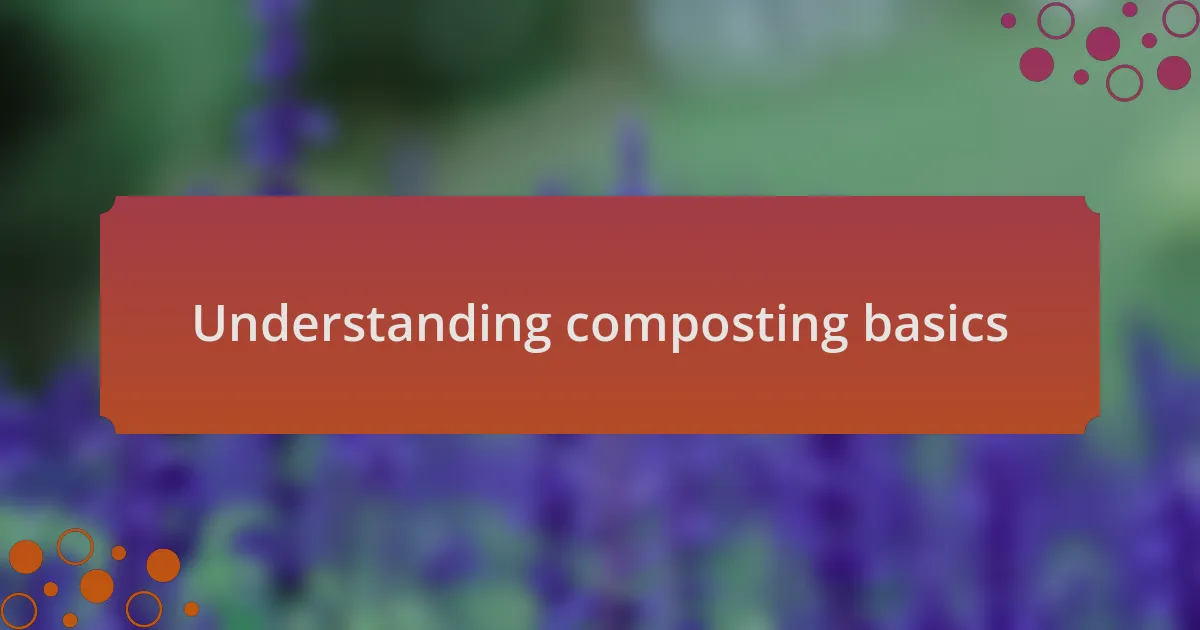
Understanding composting basics
Composting is a natural process that transforms organic waste into nutrient-rich soil. I still remember my first attempt at composting – I was amazed by how kitchen scraps and yard waste could turn into something so valuable for my plants. This transformation is essential for reducing landfill waste and enriching our gardens, a win-win situation if you ask me.
The key to a successful compost pile lies in balance. I learned this the hard way when I overloaded my bin with nitrogen-rich greens and neglected the carbon-rich browns. It wasn’t until I mixed in dried leaves and shredded paper that I saw real progress. Every time I turn my compost, I can feel the excitement about the magic happening inside – it’s like watching Mother Nature at work!
Understanding the three main ingredients—greens, browns, and water—can significantly affect the composting process. Have you ever wondered why your compost isn’t breaking down? Too much moisture can create a soggy mess while too little can hinder decomposition. I’ve found that keeping a close eye on my compost’s consistency helps me dial in the perfect environment for those beneficial microorganisms to thrive.
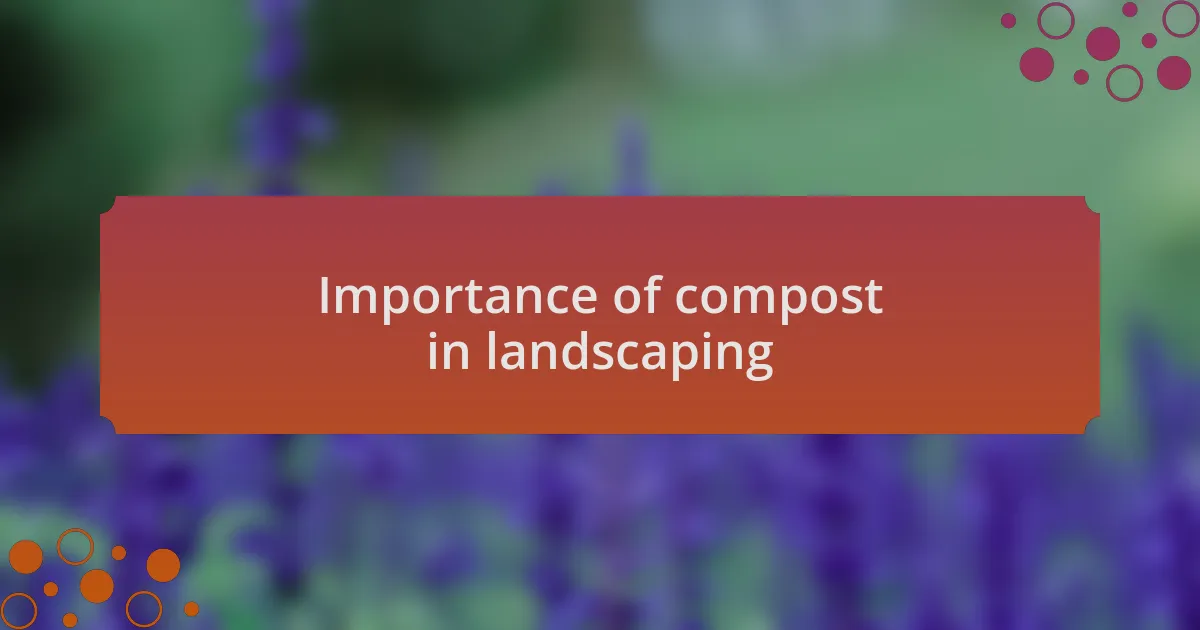
Importance of compost in landscaping
Investing in compost isn’t just about improving your soil; it’s about nurturing a healthy ecosystem for your plants. After applying homemade compost to my garden, I noticed a remarkable difference in plant growth and resilience against pests. It was incredibly satisfying to witness how a simple act of recycling could elevate my entire landscape.
Compost offers a slow-release source of nutrients, which plants find essential for thriving. I can vividly recall the lush greens in my herb garden the summer after I incorporated compost into my soil. Have you ever compared vibrant plants to lackluster ones? The difference is striking, and it made me realize how compost plays a pivotal role in fostering healthy landscapes.
Moreover, compost improves soil structure, promoting better water retention and aeration. Early on, I struggled with compacted soil that seemed impenetrable. Adding compost changed everything; it felt like my plants finally had room to breathe and grow. If you’ve experienced similar frustrations with your soil, I encourage you to give compost a chance—your garden may just thank you for it!
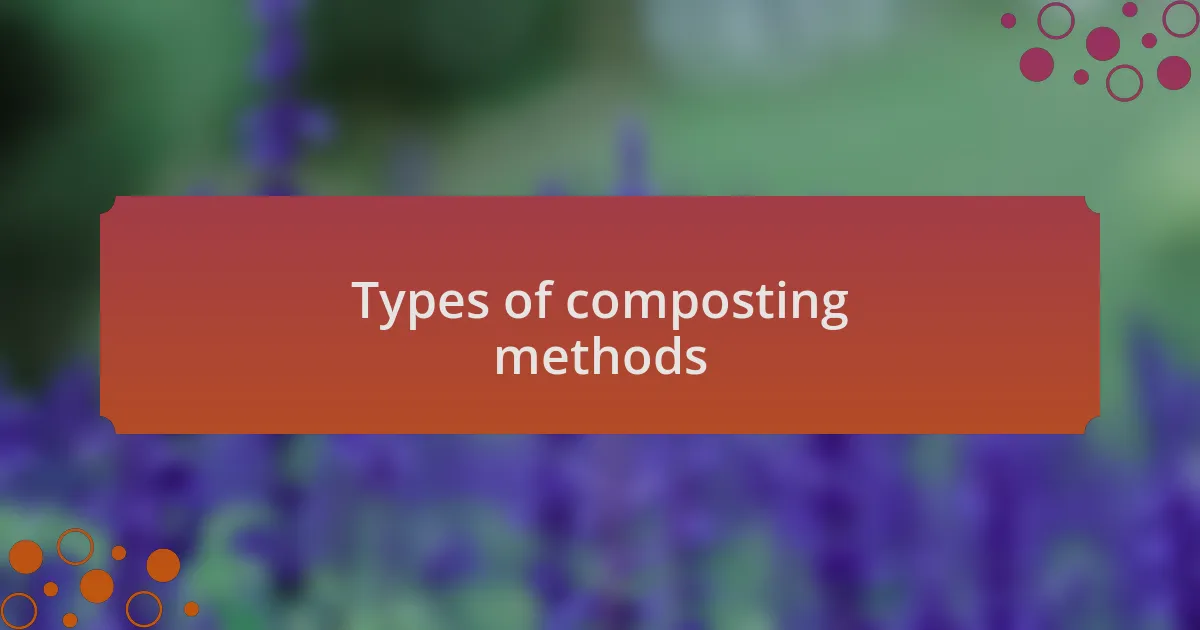
Types of composting methods
When it comes to composting methods, I find that there’s quite a variety, each with its own set of benefits. For instance, I often use hot composting, which involves layering organic materials and allowing them to decompose quickly through high temperatures. The first time I tried this method, I was amazed by how quickly I had rich, dark compost ready for my plants, just within a month. Have you ever been surprised by how efficient nature can be?
Then there’s cold composting, a more laid-back approach where you simply pile your compost materials and let time do the work. I remember starting a cold compost pile in my backyard and often forgetting about it for weeks. The beauty of this method is its simplicity; you don’t have to turn the pile or monitor it closely. Even though it takes longer, uncovering that nutrient-rich compost months later felt like unearthing treasure.
Another fascinating method is vermicomposting, which utilizes worms to break down organic matter. I was skeptical at first, wondering how worms could make such a difference. But once I set up my worm bin, I couldn’t believe how quickly they transformed kitchen scraps into compost. It’s an incredible feeling to know that these little creatures are not only reducing waste but also creating something beneficial for my garden! Have you considered giving it a try?

Best materials for composting
When it comes to the best materials for composting, I’ve learned that the right mix can make all the difference. I always include a balance of green materials, like vegetable scraps and grass clippings, which add nitrogen to the pile, and brown materials, such as dried leaves and cardboard, that provide carbon. It’s fascinating how just the right ratio—about 30 parts carbon to 1 part nitrogen—can speed up the composting process and result in rich soil that my plants thrive in.
I also like to add coffee grounds to my compost; they not only provide nitrogen but also help attract worms, which are wonderful allies in decomposition. Every time I toss those used grounds into the pile, I feel a sense of satisfaction. It’s exciting to think that my morning coffee has a role in creating healthful compost. Have you considered what your daily habits can contribute to your compost?
In my experience, kitchen scraps are some of the best materials to compost, but you have to be mindful about what goes in. I recall a time when I added citrus peels, thinking they would break down just like everything else. Unfortunately, they took longer and attracted pests. It taught me a valuable lesson: understanding which materials work best can lead to a smoother composting journey. What materials do you think would work best for your compost?
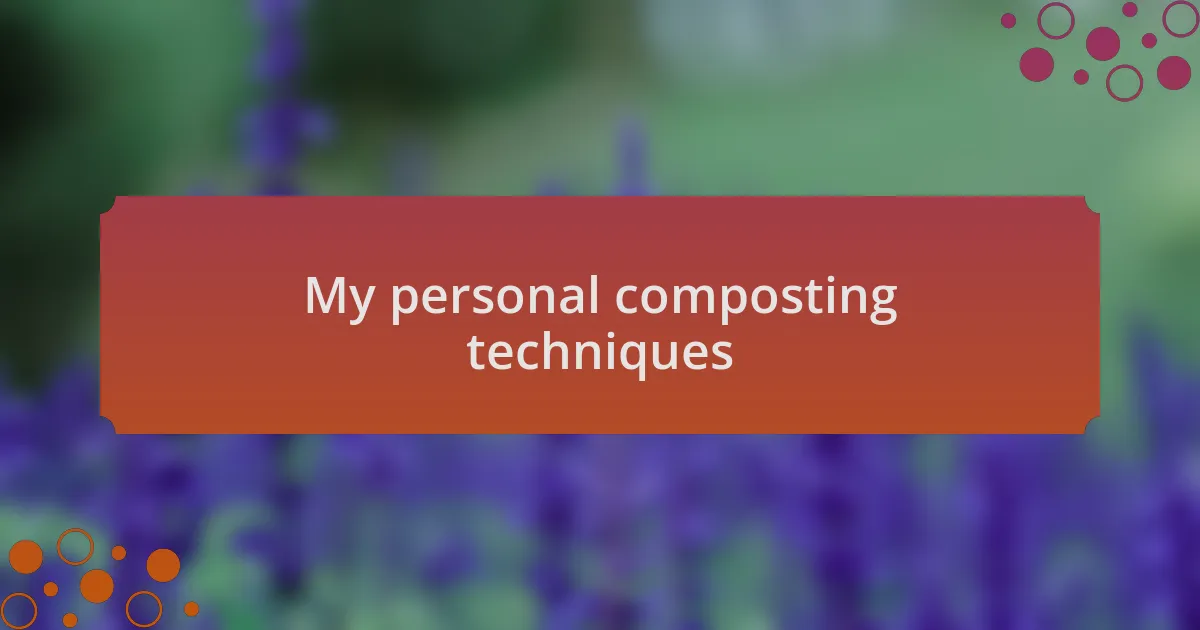
My personal composting techniques
My journey into composting has been shaped by a few key techniques that have truly transformed my approach. One method I find particularly effective is layering my compost pile. I usually start with a sturdy base of coarse materials like twigs or straw, which promotes airflow. Watching the pile develop over time is thrilling; it feels as if I’m nurturing a living ecosystem right in my backyard. Have you ever thought about how the way you layer could impact decomposition?
Another technique I swear by is the use of a compost tumbler. It’s not just about convenience; it allows for an even mix and faster aeration. I remember my first batch was somewhat lackluster because I wasn’t turning it enough. Once I got that tumbler, the freshness of my compost improved dramatically. How about you? Have you considered how a simple tool could enhance your process?
Lastly, I always keep a close eye on moisture levels. I often find myself feeling the compost to determine its dampness, much like a gardener checks the soil. One summer, I neglected this aspect, and my pile became too dry, hampering decomposition. My learning moment was clear: every step matters in this process. What strategies have you found helpful in maintaining the right moisture?
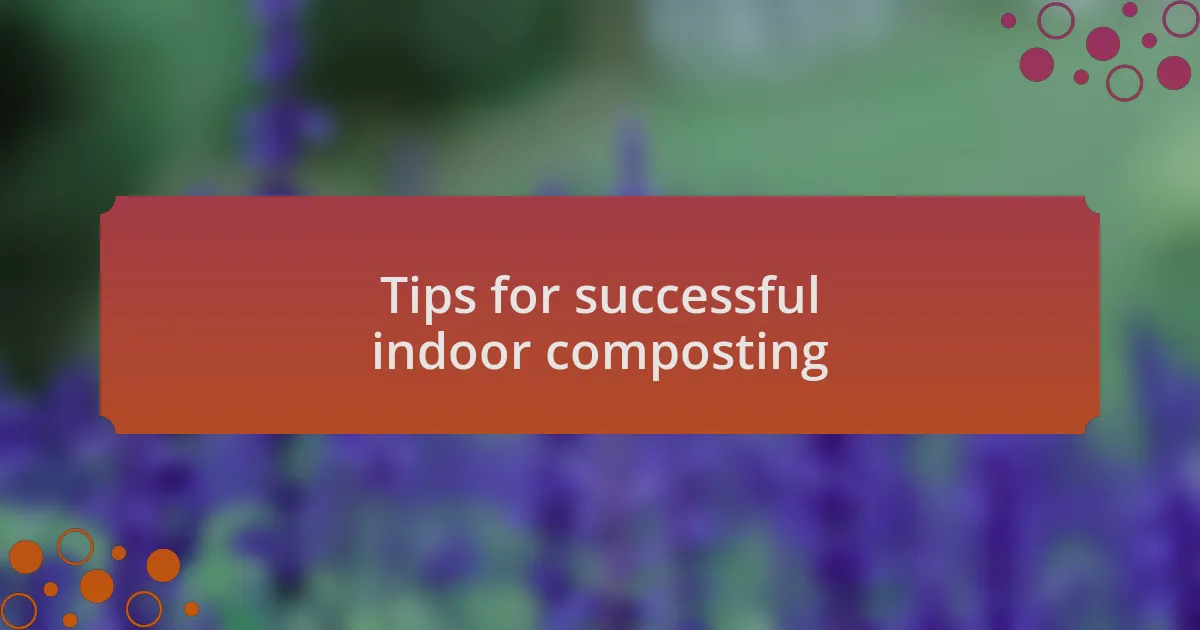
Tips for successful indoor composting
When it comes to indoor composting, I’ve discovered that choosing the right bin is crucial. I remember starting with a basic plastic container, and it just didn’t facilitate the airflow needed for effective decomposition. Once I switched to a bin with proper ventilation, the transformation was remarkable. Have you ever considered how a simple design change can elevate your composting experience?
Another aspect I prioritize is maintaining a balanced mix of green and brown materials. In my early attempts, I often leaned too heavily on vegetable scraps, which I thought was sufficient. However, once I added more dried leaves and cardboard, I could almost hear my compost sigh with relief. Have you thought about experimenting with different materials to find the perfect balance?
Lastly, I’ve learned the value of patience in this process. There are times when I’ve felt anxious, waiting for the rich compost I envisioned. On a particularly warm day last year, I took a moment to simply observe my compost pile and realized the microbial action happening was a beautiful reminder that good things take time. How often do you marvel at the small changes in your compost, knowing each day brings you closer to that black gold?